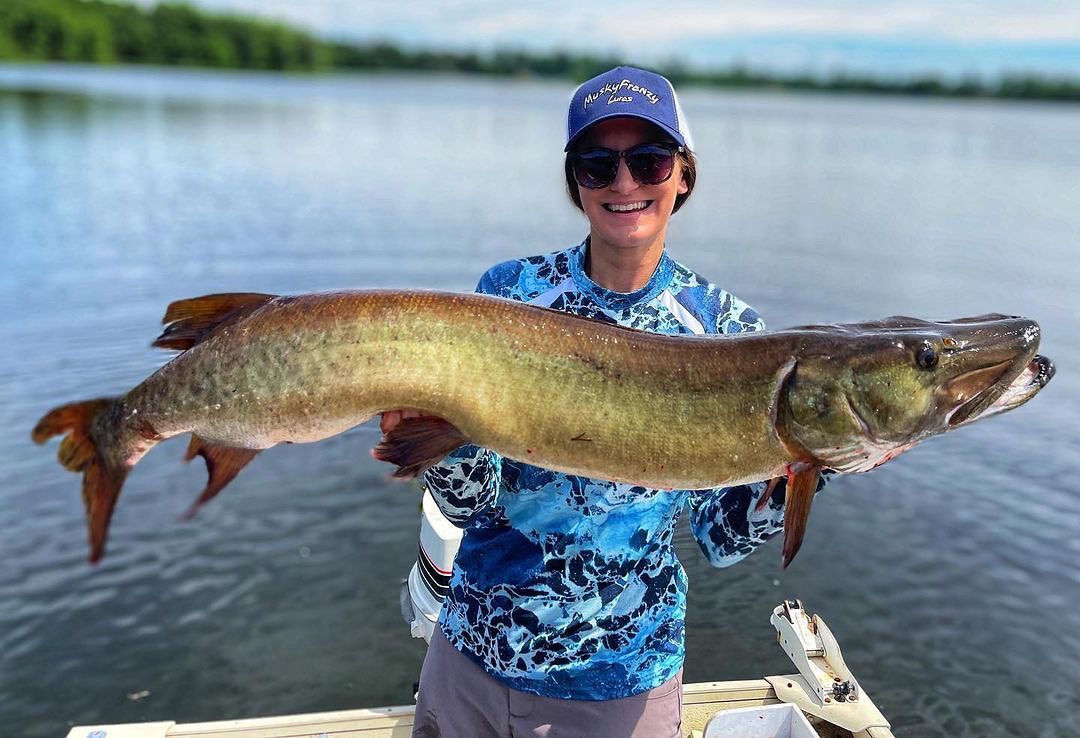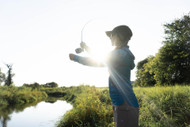When to Fish: Choosing the Best Time to Hit the Water
Posted by Samantha Simma on Oct 15th 2021
When it comes to the outdoor sports we love, our schedules are often dictated by everything else we have going on in our lives. Jobs, friends, family, chores…they all pull at us for our time and attention. But if we can choose when we fish, we can greatly optimize our time on the water in terms of success. Then again, a successful day on the water doesn’t have to mean catching anything, does it? Either way, here’s what we’ve found to be true most of the time:
Temperature
Temperature is the predominant factor that dictates fish behavior. A spell of hot—or cold—weather can make fish sluggish. Being cold-blooded, fish can’t keep their own body temperature at a consistent level. Instead, their surroundings effect their body temperature and its functions. Therefore, anglers typically fish in the morning or evenings, avoiding the hottest part of the day.

Even if it doesn’t feel particularly hot out, factor in how much sun is hitting the water. It doesn’t take long for the sun’s rays to dial up the water temperature to an uncomfortable level for the fish, which will force them to seek out deeper, cooler waters. Meanwhile, if there’s sufficient cloud cover shielding the water from the sun, you might get away with fishing later into the day. An eye on the forecast and a water temperature gauge will help you plan your day.
Weather and Wind
You may know from the forecast that there’s inclement weather rolling in, but the fish will know it’s coming due to their sensitivity to barometric pressure changes. To put it simply, barometric pressure is the air pressure in the atmosphere. Low or falling pressure signals an incoming storm, while high or rising pressure is associated with clearer skies. Fish, sensing these changes, will try to feed before a storm—when the pressure is decreasing. If you can, fish the few hours leading up to a storm system.
Not all storms are created equal, however. Fish prefer to feed in less turbulent waters, so if there’s a lot of wind leading up to and during a storm, that will deter fish. They would have to exert too much energy to make obtaining food worth it. In general, if you pay attention to wind movements, you can determine where the wind is carrying food sources in the water—and the fish along with them. On the other hand, a storm with light rain is a positive turn of events: not only will it wash insects into the water for fish to feed on, it will help your concealment if you’re fishing from shore or a boat.

Seasonal Shifts
Fish behavior shifts along with the seasonal changes. In the spring, fish will favor shallower waters that warm up faster and where early plant growth is most plentiful. During this time, the fish are hungry and spawning, but the mornings are probably still chilly. This would be the season to fish in the afternoon or early evening, when the sun has warmed the water just enough for the fish to get moving.
During the summer, you’ll battle the sun’s rays alongside the fish. Remember the warming trends we’ve already covered and know that fish will try to balance their position between the warm surface waters and the cooler waters just below it. This water column is called the thermo cline and gives fish the best of both worlds. In summer, mornings and evenings are the best bet, when the fish rise from the deeper, cooler waters they seek out during the heat of the day.
Throughout the fall, it’s not uncommon for their to be stronger winds that mix and equalize the water temperatures more than in other seasons. Dispersing the temperature and oxygen levels of the waters encourages fish to move more freely this time of year. While the fish are trying to stock up for the winter ahead throughout most of the day, if there’s a persistent chill in the air the mornings may be too cool for much movement.

In the winter, fish are eating a lot less, because the cold temperatures have drastically slowed their metabolism. Simultaneously, they’re conserving their energy and not moving around much. If you can use a fish finder or water temperature gauge, you’ll have the best luck at finding holes and pockets where the fish are trying to find any bit of warmth they can.
Fishing Calendars
Even with all of the above in mind, there are variables dictating fish feeding behavior—like tides and moon phases—that differ by area or by fish species. Fish calendars, which are available as mobile apps these days, can give you specifics for the location you’ll be fishing. They’ll help you anticipate the best times to wet your line.
In conclusion, all other factors aside, dusk and dawn rank supreme in most instances. However, in our opinion, the best time to go fishing is…any time you can. There’s never a wrong day or time to get on the water.

